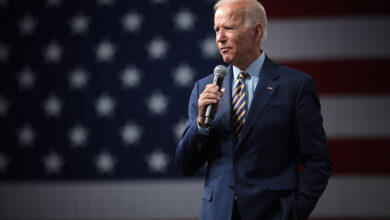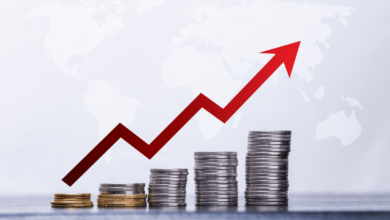US Inflation Surges Due to Rising Fuel and Housing Costs

Inflation in the US Escalates as Costs for Fuel and Housing Soar
In a recent report by the US Labor Department, consumer prices have seen a notable increase over the last month, indicating a stalled progress in the battle against inflation. Over the 12 months leading to March, inflation rates climbed to 3.5%, a slight rise from February’s 3.2%. This escalation is fueled by higher costs across several sectors including fuel, housing, dining out, and apparel.
Despite hopes earlier this year for a reduction in borrowing costs, the persistence of inflation has prompted analysts to predict that the US central bank might maintain elevated interest rates for an extended period. Higher interest rates are a strategic measure to stabilize prices by increasing the cost of borrowing, which theoretically should slow down economic activities and alleviate price pressures.
The Federal Reserve currently maintains its key interest rate at the highest in over two decades, ranging between 5.25% and 5.5%. This high rate scenario stems from the aggressive 9.1% inflation rate witnessed in 2022, primarily influenced by pandemic-driven supply chain disruptions and geopolitical tensions, notably the Ukraine conflict which spiked food and energy prices globally.
Despite the softening of inflation in 2023 due to the resolution of pandemic-era supply issues and the easing of food and energy price surges, inflation rates continue to hover above the Fed’s target of 2%. A recent uptick in oil prices has further pushed energy costs upwards, contributing to the current inflationary pressures.
The Labor Department highlighted that from February to March alone, prices surged by 0.4%, mirroring the increase of the previous month. This rise was significantly impacted by increased costs in petrol and housing, which together accounted for over half of the inflation increase. Additionally, other factors such as car insurance, medical care, and internet costs also played a role.
Economists often refer to core inflation—which excludes the more volatile food and energy prices—as a better predictor of future inflation trends. As of the latest reports, core inflation remains steady at 3.8%, unchanged from February. This steadiness suggests underlying economic factors that may continue to exert upward pressure on general pricing structures.
The implications of sustained high inflation are significant for both the domestic and global economy. The decisions of the Federal Reserve not only affect US monetary policy but also influence central banking decisions around the world. As Neil Birrell, Chief Investment Officer at Premier Miton Diversified Funds, pointed out, other central banks are closely monitoring the Fed’s moves and may need to adjust their strategies based on these outcomes.
Brian Coulton, Chief Economist at Fitch Ratings, commented on the situation stating, “We shouldn’t overreact to the jump in headline inflation, which was all about energy. However, the details are not at all reassuring for the Fed.” This sentiment reflects a broader concern among economists that while the primary inflation drivers are identifiable, the broader economic landscape remains uncertain.
As the Federal Reserve grapples with these challenges, the broader economic community remains on alert. The potential for continued high rates could dampen consumer spending and business investments, which are crucial for economic growth. This scenario underscores the delicate balance the Fed must maintain in steering the economy towards a stable growth path without exacerbating inflationary pressures.
In conclusion, as the US and global economies continue to navigate post-pandemic recovery and geopolitical complexities, the trajectory of inflation and the corresponding monetary policy responses will be critical in shaping economic stability and growth prospects moving forward.




